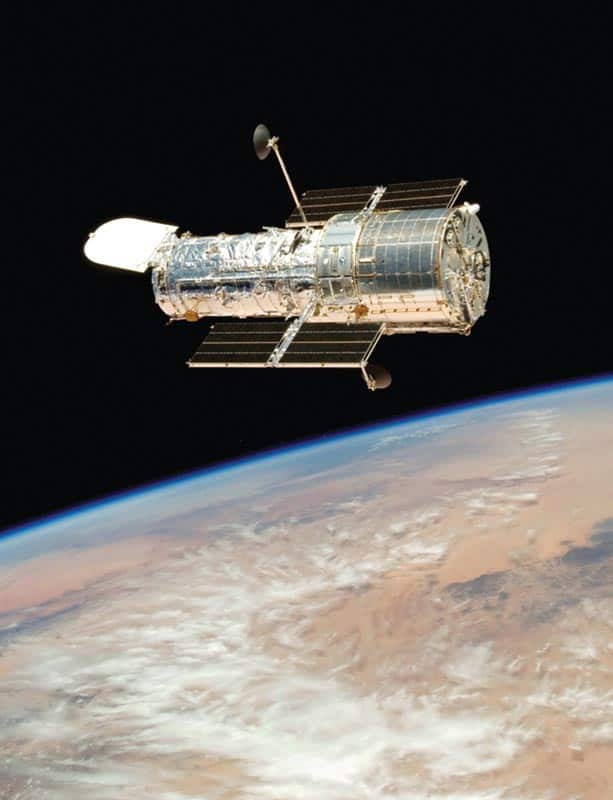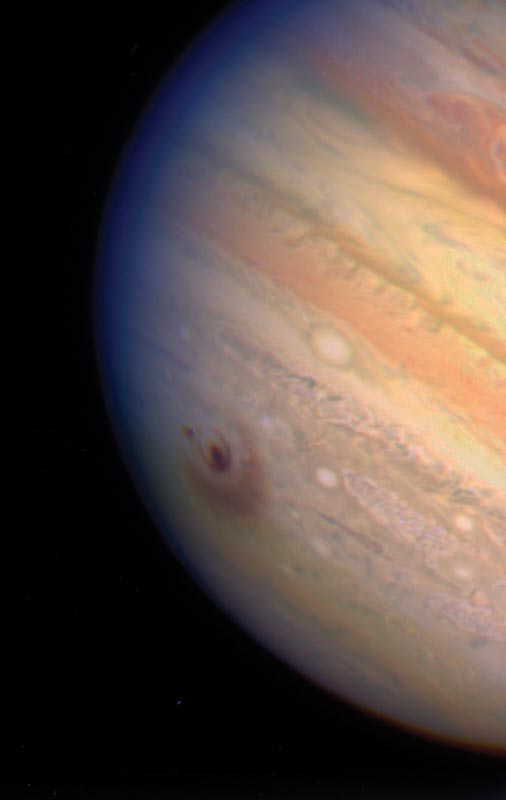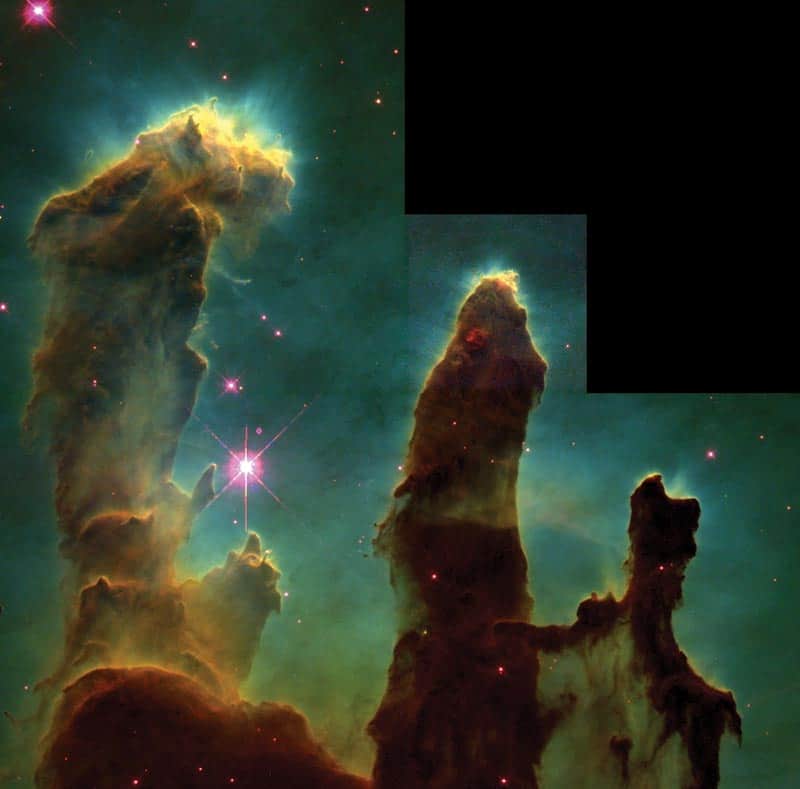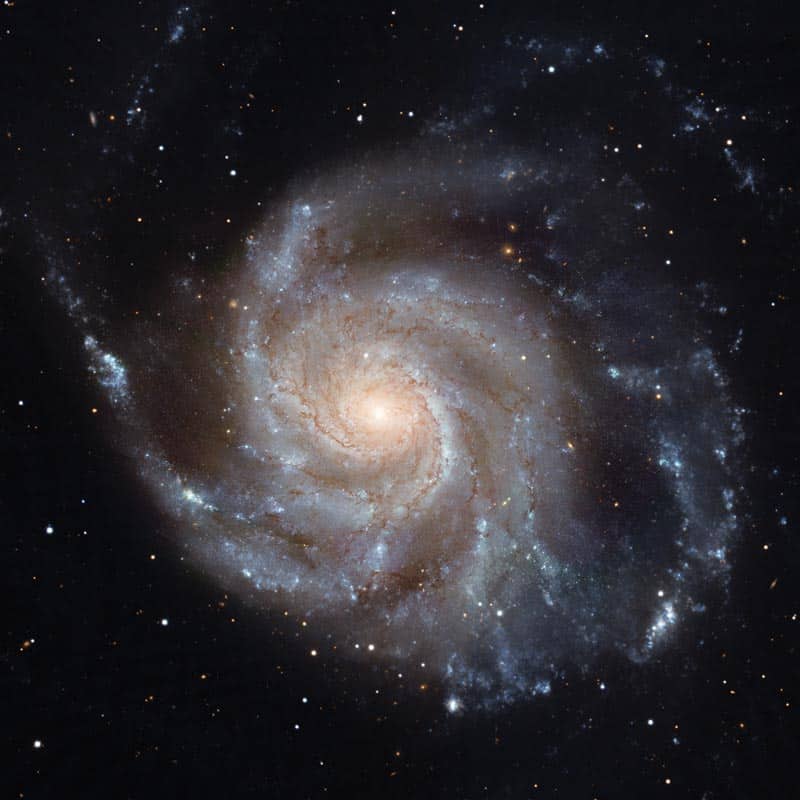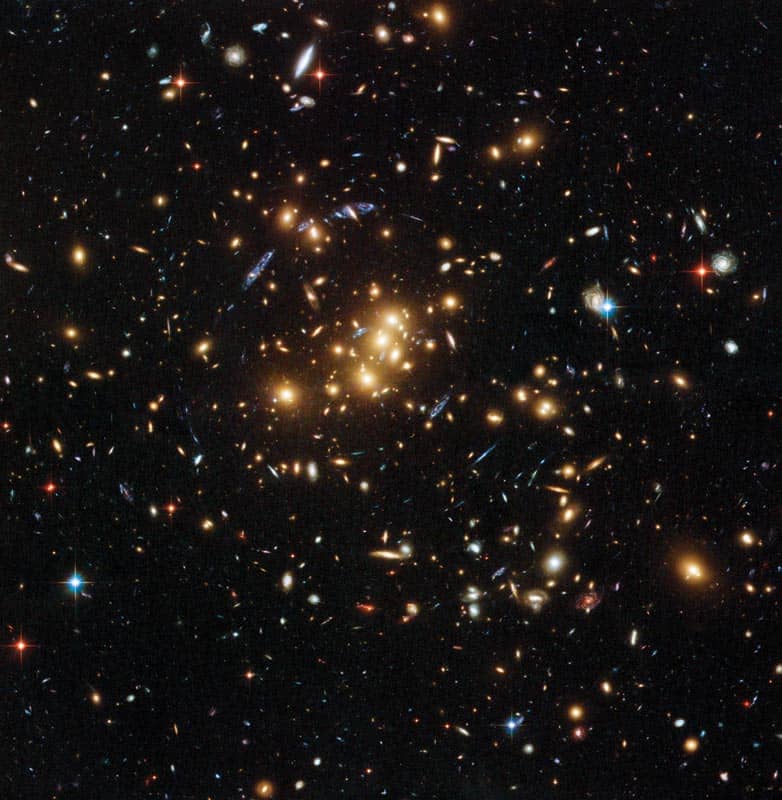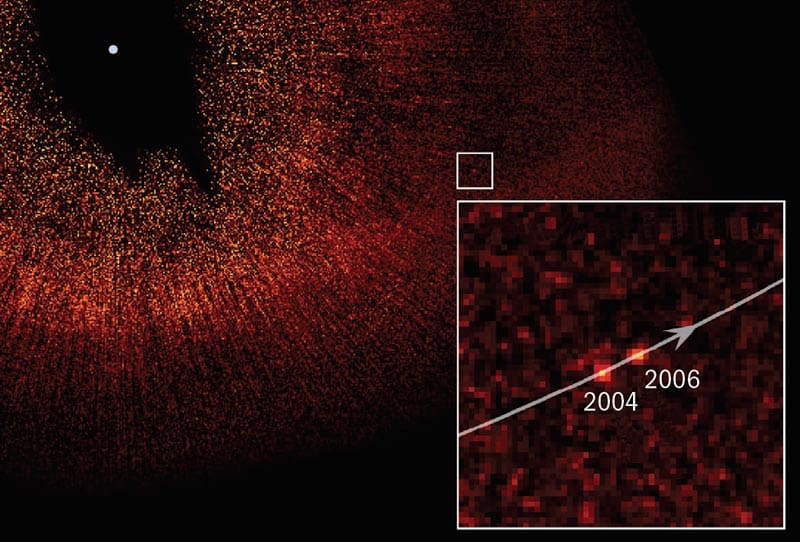After 20 years, the historic mission of the Hubble Space Telescope is now in its final phase. Mark Voit explains how the telescope has earned a prominent place in the history of astronomy, and reviews some of its revolutionary discoveries
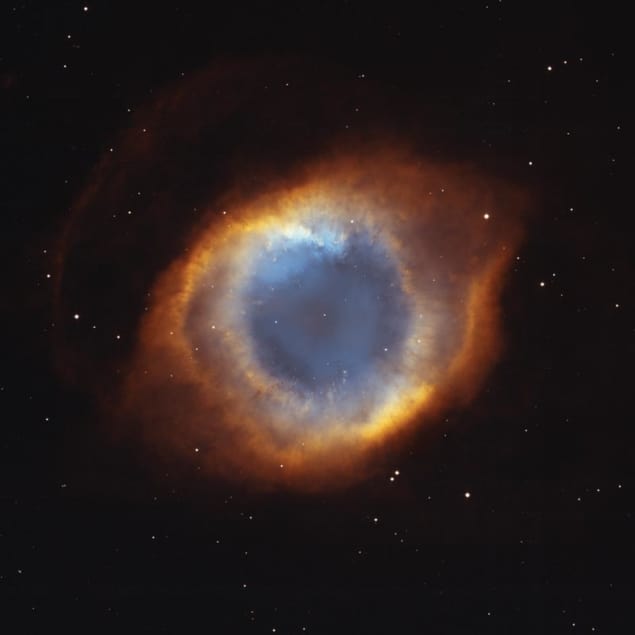
What is your favourite image from the Hubble Space Telescope? The Hubble Deep Field? The Eagle Nebula? The Whirlpool Galaxy? Maybe a portrait of one of the planets? Undoubtedly, you will have seen dozens of Hubble images, because they are everywhere – newspapers, magazines, TV shows, the backgrounds of webpages, even on greetings cards. This proliferation of gorgeous pictures has propelled Hubble to an iconic status that no other scientific instrument can match. Just ask someone on the street to name a telescope. The answer will almost certainly be the Hubble Space Telescope, even though many other instruments have also helped make the last few decades a golden age of astronomy.
Hubble’s images are so captivating largely because of the telescope’s location above the Earth’s atmosphere. Placed in orbit 20 years ago by the Space Shuttle Discovery, Hubble circles the Earth once every 96 min at an altitude of about 560 km – not all that far above our heads. Compared with the distances of its cosmic targets, this means that the telescope is virtually scraping the Earth’s surface. However, this is still high enough to overcome the greatest obstacle to precise astronomical observations: Earth’s problematic atmosphere, which blocks most forms of electromagnetic radiation that astronomers would like to observe. Even visible light does not pass through unaltered. The view of space provided by a large ground-based telescope is somewhat blurry because atmospheric turbulence subtly refracts and deflects the paths of light beams by ever-shifting amounts. If uncorrected, these deflections smear out the images of distant stars, which would otherwise appear nearly point-like, so that they have an angular size of about an arcsecond, depending on atmospheric conditions. Aside from the effect we know as twinkling, the human eye cannot detect this blurring, but it seriously compromises astronomical studies that require the utmost sharpness of vision. From its perch in space, Hubble has a great advantage. It does not have to contend with the blurring effects of the atmosphere and so can consistently deliver magnificently detailed images.
Beyond the beauty, Hubble’s celebrity status has received an added boost from its dramatic history. In the years leading up to its launch in 1990, the Hubble Space Telescope was heavily hyped as the greatest advance in astronomy since Galileo first pointed a telescope at the heavens. To take advantage of the pristine view from space, NASA commissioned one of the most precisely ground mirrors ever fashioned to serve as Hubble’s primary optical element for gathering and focusing light. Immensely high expectations then gave way to deep despair after launch when the telescope could not be properly focused and the primary mirror was found to be at fault. The mirror’s surface was amazingly smooth and precise, but its shape was incorrect because the testing equipment used in the grinding process had been improperly assembled. As one US senator put it, the billions of dollars spent on Hubble had produced a “techno-turkey”. But one special feature of Hubble’s design offered hope. Unlike other telescopes in space, Hubble was built to be serviced by visiting astronauts. It was always part of NASA’s plan to upgrade Hubble periodically, adding newer, more capable instruments every few years during the course of the mission. And in 1993, astronauts on board the Space Shuttle Endeavour delivered and installed corrective optics that precisely compensated for the primary mirror’s disfigurement, thereby restoring the superior vision that has now produced an impressive gallery of images and reams of scientific discoveries.
Each subsequent servicing visit has left a newer, even more improved version of the telescope. The improvements have been so significant that it makes sense to group this retrospective of Hubble’s accomplishments into five different periods, each punctuated by a servicing mission that installed new instruments. Through this string of scientific smash hits the telescope has earned a prominent place in astronomical history, but at the beginning of the mission its success was not at all assured.
Struggling to survive (1990–1993)
If the first servicing mission had failed to correct Hubble’s vision, then the entire programme might have been cancelled. Yet despite the telescope’s abysmal popular reputation during its first three years, it was still managing to do valuable scientific work. Even with a flawed primary mirror, Hubble remained the finest telescope ever built for observing short-wavelength ultraviolet light, which cannot penetrate the Earth’s atmosphere. One of the key projects identified for Hubble prior to launch did not require excellent image quality, because it made use not of its imaging cameras, but of its spectrographs.
That key project was to study the gas between galaxies. Most of the gas in the universe is outside of galaxies, where it is extremely difficult to study. Intergalactic gas emits virtually no light, and most of what we know about it comes from spectroscopic studies of distant quasars. As light from a quasar journeys to the Earth it passes through numerous intergalactic gas clouds. Each cloud absorbs a little bit of light at a few specific wavelengths that depend on the composition and ionization state of the cloud. So when the quasar spectrum arrives at the Earth, it carries information similar to that in a geological core sample, telling us about the conditions in intergalactic space all the way along the pencil-thin line of sight back to the quasar.
Much of the information is encoded in the ultraviolet part of the spectrum because that is where atoms interact most strongly with electromagnetic radiation. Prior to the Hubble mission, studies of intergalactic gas were restricted to very distant clouds whose cosmological redshifts were great enough to shift the ultraviolet features of interest into the visible band, thus making them observable with ground-based telescopes. Hubble’s ultraviolet observations of quasars throughout its mission have therefore helped fill a giant gap in our understanding of intergalactic space, showing us how the conditions between galaxies have changed over the last few billion years of cosmic time.
Golden oldies (1993–1997)
Once the December 1993 servicing mission had replaced Hubble’s main camera and fitted the other instruments with corrective optics, the telescope was finally ready to make history. Its first big splash came a few months later, with an unusual comet known as Shoemaker–Levy 9 that was due to collide with Jupiter in July 1994. Tidal forces during a previous close encounter with Jupiter had already torn the comet to pieces, leaving a string of fragments that would plunge one by one into the planet’s cloudy surface. A collision of this magnitude happens in our solar system only once every few hundred years, and Hubble was repaired just in time to watch it unfold, providing the most detailed pictures available of the fragments’ impact sites (see “Comet impact site”). This event coincided with a rapid increase in public use of the Internet, and the impact images were among the earliest to be swapped on the Web.
Another landmark Hubble image released the following year showed the now-famous Eagle Nebula (see “Star formation”), its bulbous columns of glowing gas highlighting for the public the intricate detail with which the Hubble telescope can capture the beauty of space. In this star-forming region of our galaxy, gravitational forces within the densest, darkest parts of the cloudy columns are drawing gases together to produce new stars, and ultraviolet light from young, nearby stars is eroding the columns and causing them to glow. This is just one of the many popular Hubble images that illustrate the lifecycles of stars. For astronomers, seeing such images has been like looking up answers to their stellar-evolution homework in the back of the book. Many of Hubble’s findings about stars were anticipated by earlier models but received stunning confirmation with the vividly detailed images the telescope provides.
Perhaps the most historic image from this period is the Hubble Deep Field (see “Hubble Deep Field”), released in January 1996. At the time, it was the deepest view of space ever recorded. The location in the sky was chosen to be completely ordinary, so that it would be representative of the universe at large. The telescope pointed at this spot for 10 days solid, gathering as much light as possible and trying to detect the faintest and farthest galaxies it could possibly discern. Measuring the redshifts of these galaxies shows that light from the most distant ones in the image has taken more than 10 billion years to reach us. Most of cosmic history is therefore represented in this image, and it has been crucial to establishing how the overall formation rate of stars and galaxies in the universe has changed over time.
The youngest, most distant galaxies in the Hubble Deep Field image look smaller and far less settled than present-day galaxies. This indicates that galaxy collisions were common early in the history of the universe and supports the idea that galaxies grew hierarchically, as smaller objects merged to form bigger ones. This active period of merging and galaxy construction gradually tailed off as the universe continued to expand, and the slowdown in galaxy construction coincides with a slowdown in star birth. The rate of star formation in the universe appears to have topped out between two and four billion years after the Big Bang and now creeps along at less than a 10th of its maximum value.
Classic hits (1997–2002)
Instant discoveries were possible during the first few years after Hubble’s initial repair, as each new image revealed never-before-seen details in the sky. A second repair mission in 1997 further expanded Hubble’s capabilities with a new infrared camera and a new ultraviolet spectrograph. But some of the telescope’s more lasting scientific accomplishments were made with earlier equipment and simply required several years of observation and analysis to bear fruit.
One such study was another of the key projects identified for the mission before launch: a large programme to measure the universe’s expansion rate with unprecedented precision. The telescope’s namesake, Edwin Hubble, discovered the expansion of the universe in 1929 by demonstrating a proportional relationship between the distances of galaxies outside our local group and the speeds at which those galaxies are moving away from us. The quantity expressing the expansion rate, H0 = (recession speed)/(galaxy distance), has been dubbed the Hubble constant in his honour. Knowing its value is critical because it tells us the age of the universe (approximately 1/H0). It can also be used to derive the distances of galaxies (which are otherwise difficult to measure) from their recession speeds, which are easy to determine from the redshift of each galaxy’s spectrum.
However, in order to measure H0 precisely, one must somehow measure distances to a sample of galaxies without using this convenient relationship. The key project to measure H0 applied the same Cepheid-variable technique that Edwin Hubble used to make his original distance measurements to gauge galaxy distances up to 100 million light-years away. Cepheid variables are stars that pulsate in size and brightness at rates depending on their masses. They are ideal for measuring galactic distances because they are among the most luminous of stars and the variation period of a Cepheid is directly related to its total light output. Measuring both the apparent brightness and variation period of a Cepheid therefore provides enough information to determine the distance to the galaxy in which it resides. One simply infers the total light output of the Cepheid star from its pulsation period and calculates the distance at which a star with that light output would have the observed level of apparent brightness. Hubble is particularly suited to the job because its ultra-sharp vision allows astronomers to identify and measure individual Cepheid variables in galaxies that would be hopelessly blurry in ground-based images (see “The universe’s age and expansion rate”). In 2001 the key project team announced a measurement of H0 that was good to within 10%, pegging the universe’s age at about 14 billion years.
Meanwhile, astronomers taking advantage of Hubble’s distance-measuring capabilities to survey still greater distances made one of the most astonishing scientific discoveries of the 20th century. The discovery relied on observations of supernovae produced by exploding white-dwarf stars, which conveniently all have approximately the same peak light output. This property enables astronomers to determine a supernova’s distance by observing the maximum apparent brightnesses of white-dwarf supernovae. As with Cepheids, one knows the total light output and can calculate the distance at which such an object would have the observed apparent brightness. Using such distance measurements, in 1998 two separate teams of researchers showed that the expansion rate of the universe has been accelerating during the last several billion years, a result that shocked astronomers, who had expected the attractive force of gravity to be slowing the expansion rate. Some unknown form of energy, dubbed “dark energy”, is thought to be the impetus for the accelerating expansion, and efforts to measure dark energy and its equation of state are now a major theme of modern astronomy and cosmology.
Hubble’s signature contribution to measurements of the accelerating expansion was again its superior vision. Most of the supernovae used in these studies were discovered with ground-based telescopes. However, in a ground-based image it is difficult to distinguish the light output of a distant supernova from the light output of the galaxy that contains it. With Hubble, subtracting the galaxy’s light to determine the peak brightness of the supernova alone is far easier (see “Evidence for dark energy”), thus enabling much more accurate distance measurements. Furthermore, one of the new instruments installed in 1997 – the infrared camera (called NICMOS) – was able to find highly redshifted supernovae even more distant than those discovered from the ground, providing distance measurements that cemented the finding of accelerating expansion.
The other instrument installed in 1997, the STIS spectrograph, is most notable for helping to identify and measure the masses of supermassive black holes at the centres of nearby galaxies. Black holes themselves are invisible, so to prove that these exotic objects really exist, astronomers must measure their gravitational effects on stars and gas clouds in orbit around them. Orbital speeds are best measured spectroscopically, using the Doppler effect, and so from above the Earth’s atmosphere Hubble’s spectrographs were able to map out the orbital patterns at the centres of galaxies in more detail than ground-based telescopes. Measuring black-hole masses in this way has shown that almost all galaxies have black holes at their centres, and that the mass of a central black hole is directly related to the total mass of the stars making up the galaxy’s central bulge.
Staying power (2002–2009)
Hubble’s next major upgrade in 2002 added a more sensitive camera, the Advanced Camera for Surveys (ACS), which greatly expanded the telescope’s capacity for gathering deep images of the universe. One of its early tasks was observing the Hubble Ultra Deep Field, an even deeper look into the universe than the Hubble Deep Field from 1996. The Advanced Camera was also the workhorse of the Cosmic Evolution Survey (COSMOS), the largest sky survey done by Hubble, which captured images of more than two million galaxies in a two-square-degree swathe of sky.
Among the most important accomplishments of this survey was the mapping of dark matter associated with those galaxies. Most of the matter in the universe emits no light and is thought to be made of particles different from those found in normal atoms. The best method for mapping this dark matter relies on gravitational lensing – the bending of light beams as they pass near large clumps of matter. Hubble images of giant galaxy clusters, which can contain up to 1015 times the mass of the Sun, beautifully illustrate how the presence of a large mass distorts our view of the galaxies lying behind it (see “Gravitational lensing”). Lensing studies with Hubble, including the COSMOS survey, have helped to show that the distribution of dark matter in the universe closely agrees with predictions of structure-formation models that assume dark matter to be made of as-yet-undiscovered subatomic particles, which interact only through gravity and the weak force.
Closer to home, Hubble’s Advanced Camera has also been useful for observing planets around other stars. Monitoring of the bright star Fomalhaut, just 25 light-years away, has produced the first visible-light snapshot of a planet orbiting another star (see “Extrasolar planets”). Obtaining direct images of such extrasolar planets is a daunting challenge because a star generally outshines its planets by many orders of magnitude. Some of Hubble’s cameras are therefore equipped with coronagraphs that can block the light from a bright central star, like one might use a hand to block the glare of the Sun, to allow us to see planets or disks of gaseous debris that might be in orbit around it. The composite image shown here reveals a planet orbiting Fomalhaut at a distance 10 times Saturn’s orbital distance, and tracks the planet’s motion from 2004 to 2006.
During this same time period on Earth, enormous uncertainties plagued the Hubble mission. Many components on the spacecraft were aging beyond their design lifetimes, and the gyroscopes crucial for steadying the telescope’s orientation in space were failing. One final servicing mission had been planned to ensure continued operation of the telescope through 2010, but it was cancelled in 2004 by NASA chief Sean O’Keefe, in response to the loss of the Space Shuttle Columbia. In this case, Hubble’s celebrity status was its salvation. Vocal public response to the cancellation was decidedly negative, and in 2006 one of the early actions of O’Keefe’s successor Michael Griffin was to restore Hubble’s last upgrade.
The farewell tour (2009 onwards)
The final servicing mission ultimately happened in May 2009. By that time Hubble was severely crippled. Three of its main instruments – ACS, STIS and NICMOS – were dormant, and the telescope desperately needed new gyroscopes, batteries and a computer for science operations. However, astronauts on the Space Shuttle Discovery were able to replace all the required components, resuscitate ACS and STIS, and install two new instruments. One of the new instruments, the Cosmic Origins Spectrograph, is Hubble’s most sensitive spectrograph yet and will expand the ongoing programme of quasar spectroscopy to provide many more core samples of intergalactic gas. The other new instrument, the Wide Field Camera 3, is the telescope’s most sensitive camera and has already identified galaxies more distant than any previously found in Hubble’s deepest fields. And, of course, the newest camera is also providing more spectacular images to decorate the front pages of newspapers and magazines (see “Dying stars”).
If all goes well, the Hubble Space Telescope will continue to make landmark discoveries until its successor comes online. That should happen in 2014, when the James Webb Space Telescope finally makes it into orbit. With a primary mirror more than seven times greater in collecting area than Hubble’s, it should be able to detect galaxies even more distant than those found by Hubble and may even show some of the very first galaxies in the process of formation. Expectations are high, but the new telescope has a hard act to follow. Hubble’s extended string of smash hits will be difficult to beat.
